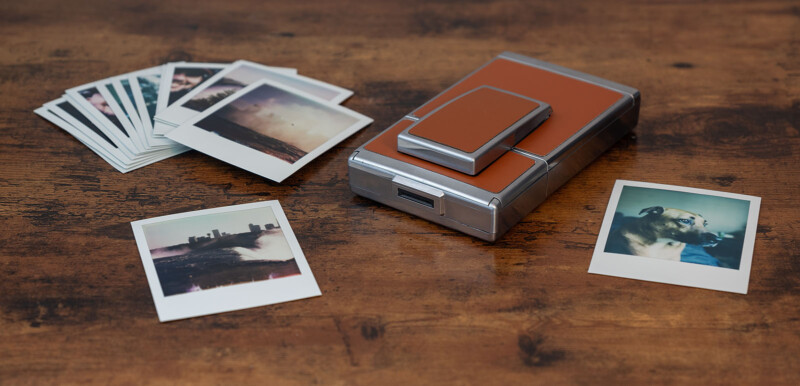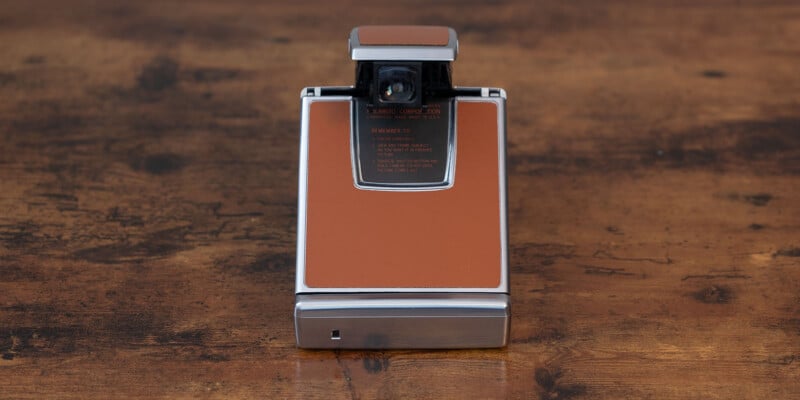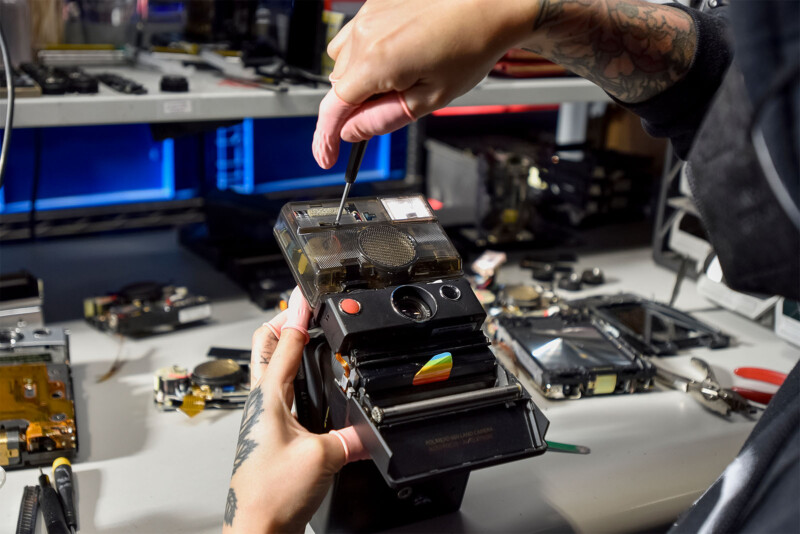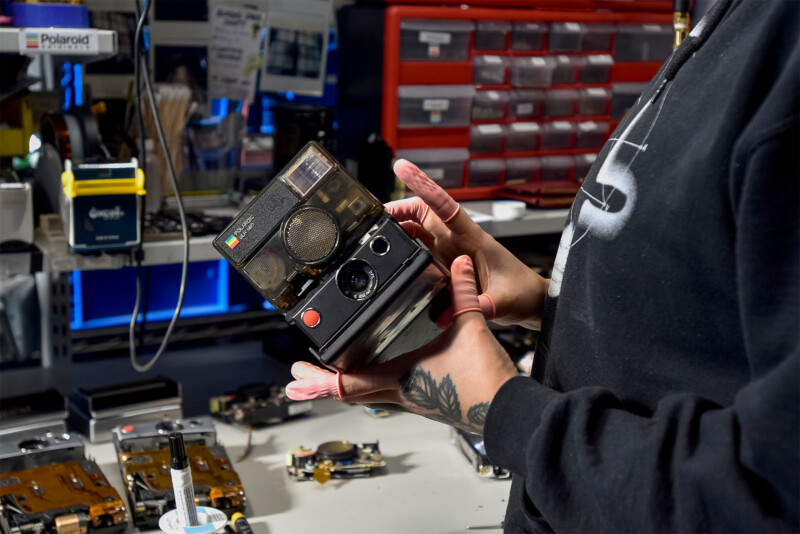![]()
Although Milwaukee-based Retrospekt has branched beyond photography equipment, dipping its toes into vintage VHS tapes, gaming, watches, and even music, it is best known for its analog cameras and films, especially its Polaroid gear.
While Retrospekt sells Polaroid film and new cameras, including some featuring fun collaborations, like Barbie, Peanuts, Sanrio, and more, it also refurbishes, repairs, and resells vintage instant cameras. This is where my path crossed with Retrospekt, as the company was kind enough to send me a refurbished Polaroid SX-70 Land Camera with 600 film conversion.
![]()
Instant Photography is Instantly Fun
This was an exciting experience for me for a few reasons, not the least of which is that I do not shoot film at all. I occasionally used a disposable 35mm film camera when I was a kid in the late 90s and early 2000s, but I am a decade-plus removed from the last time I did any analog photography.
I’ve also never shot with an instant film camera of any kind. When I was a teenager, the instant camera craze hadn’t arrived, so I missed the boat on the instant photo resurgence. Although film is alive and well today, my entry point into photography was when it was dying. I almost entirely missed film’s first party; until now, I’ve also missed its rebirth.
![]()
What It’s Like Using a Vintage Camera in the Modern Era
As for the SX-70 itself, it’s a legendary folding camera roughly the size of a mass-market paperback book when collapsed — albeit quite a bit heavier. It’s stylish, but the magic happens when it undergoes a transformation that would make Optimus Prime green with envy.
With a couple of quick tugs from the collapsible viewfinder, the SX-70 springs into life, ready for action. Once open, users can peer through an optical viewfinder and adjust focus and exposure compensation using a pair of dials.

Everything looks and feels so new that it would be easy to think the camera truly is new rather than having been built sometime between 1972 and 1981. It isn’t until you load the film that you see a small Retrospekt sticker inside. Of course, the camera’s sleek packaging features Retrospekt’s name, but the camera itself feels like it was transported through a time machine from a Polaroid factory in the 1970s.
Although there is an alluring charm to using an old camera that is practically as good as new, a couple of things show the camera’s age. The viewfinder is not great. It’s hard to frame and focus, and even when the focus is spot-on, it’s a bit blurry. There’s also the lens, a four-element 116mm f/8 glass optic. It’s fine, but the image will never be super sharp even if you nail focus, which is not easy.

But that is part of the fun, too. I wish the viewfinder were better, but I’m not convinced that a superior lens would make the SX-70 a better camera overall. There’s something to be said for the relative fuzziness of the images. If I want something clinically sharp, I have other tools I can use. But if I want to snap a photo, hear the whir of a motor, hold an image in my hand, and watch it develop from blank space into a photograph.
There is one downside to the SX-70 experience. While I believe the $379 price tag for the refurbished camera is reasonable given how much work goes into bringing old cameras into tip-top shape — plus an extra $50 if you want the 600 film conversion — shooting instant film is not a cheap endeavor in the long term.
Polaroid 600 film costs around $20 a pack, and each pack comes with eight shots. I burned through a couple of packs and quickly realized, “Wow, I’ve got to really think about how I use this camera.” For a camera that is so fun to use and would certainly attract a lot of attention among friends and family, it’s easy to imagine going through $60 or more of film in very short order. There’s an odd juxtaposition between a camera being so fun to use and so expensive to shoot that I have to be cautious.

How Retrospekt Carefully Revives Vintage Cameras
While the SX-70 itself is interesting, and I had a blast using it, I’m even more interested in discussing how Retrospekt breathes new life into old cameras, giving them a second chance to make a first impression on photographers.
There is something truly special about taking old cameras with worn-out, broken parts and giving them a fresh coat of paint that is utterly indistinguishable from if I had walked into a camera store in the 1970s to purchase a brand-new SX-70. This is a labor of love and expertise.
![]()
![]()
![]()
Retrospekt’s technicians, some of whom have been there since the very start, honed their craft with help from some original Polaroid team members and old manuals they’ve uncovered over the years. In some cases, the team developed new methods for fixing common — and less common — problems and has even designed and fabricated all-new parts.
![]()


That’s easy to overlook because “refurbishing” an old camera, whether it’s the SX-70, a Model 230 Packfilm Land Camera, a Polaroid 600, or something else, is so much more than doing some cleaning, greasing up some metal, and throwing the camera into a fresh box. The cameras must be taken apart and inspected, and parts that are either outright broken or far along the path toward failure must be fixed and replaced. Retrospekt says it takes about a year to train new technicians to refurbish the cameras it sells.
![]()
Keeping the Past Alive
While I love the SX-70 and find the experience a fun diversion from my typical digital photography workflow, I also appreciate that I’m not this camera’s first owner.
![]()
![]()
While I’ll never know precisely where this camera came from, who used it, and what photos they captured on it, I still feel like I’m holding a thread to the past. Someone used this camera to capture the moments that mattered to them, and now I get to do that, too.
Disclosure: Retrospekt offered me a refurbished SX-70 camera to use for an indefinite period, plus two packages of Polaroid 600 film. The company did not send the camera in exchange for an article or other coverage, nor did Retrospekt have any editorial input.
Image credits: Behind-the-scenes photos provided by Retrospekt. All other images by me.
